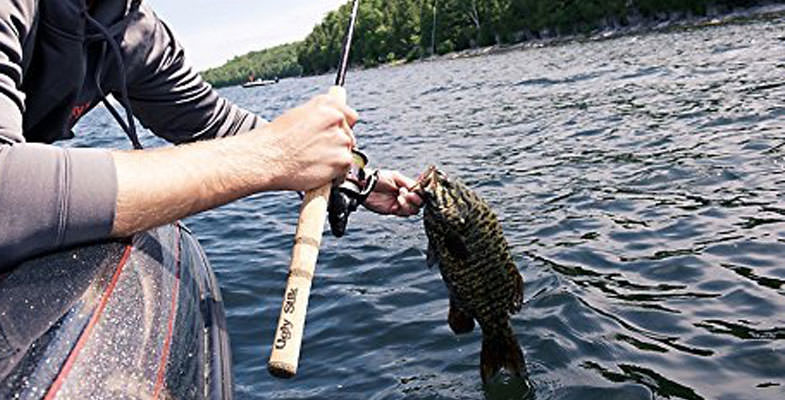The experienced fishermen know it perfectly, but perhaps a little less the neophytes, those who approach this sport for the first time: the fishing rods are not all equal, since for every type of fishing, there is a suitable one.
For this reason, buying the right fishing rod is the first step in correctly approaching this discipline and cannot be left to chance but, on the contrary, carefully considered (it would be better, for the less knowledgeable on the subject, to be initially advised by a person who knows).
When buying a cane, it is essential to have a clear idea of what type of fishing is going to be carried out and what fish species you will fish for (out of proportion fish, just to give an example: can damage the equipment, which between the other is also quite expensive).
Table of Contents
GROUND FISHING AND BOAT FISHING
Fishing can be from the ground or from a boat, activities that, in turn, use different techniques to be practiced. The fishing rod must be adapted to the type of activity that is practiced.
RODS FOR FLOOR FISHING
Here are the types of rods right for ground fishing based on the technique:
- Surfcasting : this type of fishing (requires, for example, the bream) involves the use of long rods on average from 12 to 14 feet. Since the terminals must be launched at a long distance, where the fish are found, these rods are characterized by their solidity and rigidity.
- Spinning from the ground : basses, barracudas and skins are caught in this way. The canes have a length that can reach 9 feet, they are quick, light and easy to handle. They have different weights that correspond to the maximum weight of the artificial that we can throw.
- With the floats : you catch bream, lick, bream, sea bass, etc. They serve long and light rods, generally accompanied by more ramps of rings, which give them more sensitivity as the fish gets closer.
- Rockfishing : in practice, it consists of a revised and corrected version of the spinning, made with light equipment. The canes are relatively short (no more than 0.9 inch.), Fast and sensitive. In this way, fishing is convenient for capturing species that live in rocky ravines (scorpion fish, gobies, etc.).
RODS FOR BOAT FISHING
Here are the types of rods suitable for boat fishing depending on the technique used:
- Light : for deep fishing, short and strong rods are needed, the ideal rods are between 0.8 and 1 inch., They are light and sensitive.
- Jigging fishing : the artificial metal used, called jig, has a considerable weight (around 300-400 grams), the barrel, which is usually made of two pieces called heel and stem, must be strong enough to support them and animate with ease.
The length goes from 0.6 to 0.8 inch. The barrel is very resistant, to the point that it can be used, if necessary, to take a tuna.
- Trolling : you need short and robust rods, with normal or pulley rings (these facilitate the sliding of the wires and are useful for fishing larger specimens).
- Spinning for tuna : long from 2.20 to 2.80, they consist of two parts but also 4-5 pieces, more practical and easily transportable (especially in air travel).
- Eging or squid rods : they are soft and sensitive. In this type of fishing, it is fundamental to be quick to catch the prey before it can move away.
FISHING RODS: HOW TO CLEAN AND KEEP THEM INTEGRATED
The fishing rods are resistant objects specifically designed to last long intact over time, but, like everything else, they need some little care and a minimum of maintenance. Where and how to best preserve them then?
The ideal is to always put them in their sheath and keep them away from sources of heat and humidity, two elements that can damage them and make them wear out sooner than they should.
The fishing rods can also be kept in the boat, but with some foresight. Better to keep them in the cabin well placed in the sheath and, possibly, put some elastic to block the elements.
This measure is necessary to prevent the swaying due to navigation from causing knocks and shocks to the rings. Even cleaning is a basic operation for the success of fishing rods, so it must necessarily be carried out after each stroke and following the right procedure.
To avoid mistakes, follow the indicated procedure:
- Spend the rod rather long under the jet of fresh water: it serves to eliminate that of the sea and any salt residue that, as is known, tends to rust metals (aluminum parts and the rings could be irreparably damaged).
- Gently dry with a soft fiber cloth, mostly dabbing (avoid rubbing vigorously), the barrel, then let it stay in the air for a few hours before placing it in the sheath (it must be completely dry and without the slightest sign of humidity).
HOW TO TRANSPORT THE FISHING PLANE WITHOUT PROBLEMS?
The situation was a bit more complicated until some time ago, but now, with the new detachable rods, which are closed, they have reduced dimensions, the question is definitely simpler.
Although the various airlines have rules on the subject that differ from one another, the fishing rod generally cannot be kept in hand luggage, but only in the hold suitcase.
Advice? To avoid problems and not have to pay more, get a travel tube and embark on it in the hold as luggage. Your fishing equipment will arrive safely, and you will not be at risk.
Thanks to the new fishing rods made up of multiple elements, which can be dismantled, are light and easy to handle. It is much easier and more practical than ever to take personal equipment on fishing trips that many enthusiasts like.
